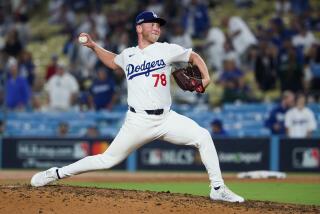Orioles’ Bad Start Evokes a Comparison to the 1899 Cleveland Spiders
The Baltimore Orioles’ disastrous start gives them a chance to make history. Not history like the 1927 Yankees, more like the 1962 Mets or better yet, the 1899 Cleveland Spiders.
Nicknamed the Spiders because a league executive observed “They look skinny and spindly, just like spiders,” they nonetheless allowed opposing clubs to fatten up on them, compiling a record of 20-134 and finishing 84 games out of first place.
They didn’t have the Mets’ excuse of being an expansion team, in fact they were 81-68 the year before, but their poor showing was not quite accidental.
In those days, it was not uncommon for two teams to have the same owner. For instance, Harry Vanderbilt owned both the Baltimore Orioles (no relation to the current team) and the Brooklyn franchise. Before the 1899 season, he thought it would be more profitable to have a winning team in Brooklyn and thus transferred several star players from the Orioles.
Cleveland’s owners, the Robison brothers, followed this example and decided to transfer the Spiders’ best players, Cy Young among them, to their franchise in St. Louis.
Although Spalding’s Official Baseball Guide for 1900 cheerfully pronounced that the Spiders’ opening-day game against St. Louis was “a noteworthy contest,” the record shows a 10-1 defeat at the hands of Young, their former ace. By the end of April they were 1-7, through May they were 8-26 and 17 1/2 games out of first.
When they reached 8-30, the Spiders replaced manager Lave Cross with Joe Quinn, the team’s second baseman, but Cleveland continued steadily downhill. The Spiders were 32 games out of first place at the end of June, the permanent “occupant of the last ditch,” in the words of the Spalding Guide.
By the start of September, the Spiders were 19-100, 60 1/2 games out of first. Attendance was so poor they were forced to play the rest of the season on the road and lost 33 out of their last 34 games.
“The club’s pitching quartette (sic) is ... weak in every essential point of play,” lamented the Spalding Guide. Led by “Cold Water Jim” Hughey, the Spiders’ starting four combined for a record of nine wins and 87 losses. Hughey lost 30 games himself although he did tie for the club lead in victories with four. Faring even worse was Frank Bates, 1-18 with a 6.90 earned run average and 240 hits allowed in 161 innings. Their fifth starter, Harry Colliflower, was 1-11 with an 8.17 ERA, allowing 152 hits in 98 innings. For Colliflower, a 30-year old rookie, it was his only season.
Cleveland’s team ERA was 6.37. The Spiders allowed opponents to score 1,252 runs, easily the league’s highest.
Their hitting was no better. The Spiders were last in runs scored, batting average, doubles, triples, home runs, slugging average and stolen bases. Only player-manager Quinn drove in more than 60 runs. Outfielders “Buttermilk” Tommy Dowd and “Eagle Eye” Charlie Hemphill led the team in homers with two. In a year that “Big Ed” Delahanty batted .408, not a single Spider reached .300.
Only in fielding did the Spiders avoid being the league’s worst. With their pitching staff allowing plenty of batters to reach base, they even turned a respectable 121 double plays, sixth best in the 12-team league.
Cleveland did play a role in the pennant race, losing all 14 games they played against front-running Brooklyn, which finished first by eight games. The Spiders also lost all 14 games against Cincinnati and managed only one victory against Chicago, New York and their sister team, St. Louis.
The shift in players did work for St. Louis which, led by Young’s 26 victories, improved its record from 39-111 in 1898 to 84-67. But the Spiders would never get the chance to redeem themselves. When the league’s owners decided to reduce the number of teams to eight for the 1900 season, the Cleveland franchise was mercifully disbanded.
More to Read
Go beyond the scoreboard
Get the latest on L.A.'s teams in the daily Sports Report newsletter.
You may occasionally receive promotional content from the Los Angeles Times.










